Thank you! Your submission has been received!
Oops! Something went wrong while submitting the form.
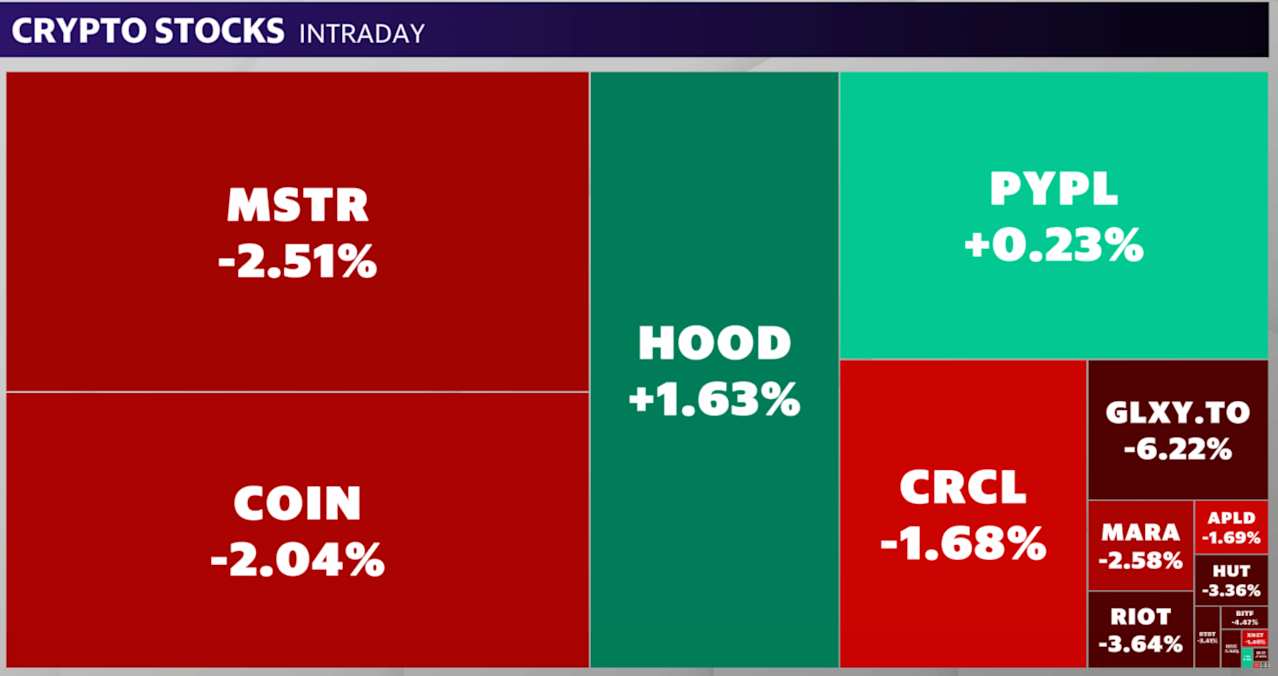
Hulk Hogan leaves behind a thriving business at WWE: Opening Bid top takeaway
Key Points
- Tesla (TSLA) reported a disappointing quarter, while Alphabet (GOOGL) exceeded expectations with strong earnings.
- Upcoming earnings from Microsoft (MSFT) and Amazon (AMZN) are anticipated next week, alongside a Federal Reserve interest rate decision.
- TKO Group (TKO), formed by the WWE-UFC merger, is in focus following the passing of wrestling icon Hulk Hogan at 71.
- WWE, under TKO, secured a $5 billion, 10-year deal with Netflix for "Raw" and reported a 23% sales increase and 38% profit growth in the latest quarter.
- TKO Group shares have risen 57% over the past year, with analysts largely bullish on the stock.
Summary
This article covers a dynamic week in financial markets, highlighting Tesla's underwhelming quarterly results and Alphabet's strong earnings performance. Attention now shifts to upcoming earnings from tech giants Microsoft and Amazon, alongside a Federal Reserve interest rate decision. A significant focus is on TKO Group, formed by the WWE-UFC merger, following the death of wrestling legend Hulk Hogan at 71 from cardiac arrest. Hogan, a pivotal figure in popularizing wrestling globally during the 1980s, leaves behind a robust WWE business within TKO. The company recently secured a landmark 10-year, $5 billion deal to stream "Raw" on Netflix and reported impressive quarterly growth with a 23% sales increase and 38% rise in operating profits. TKO's stock has surged 57% over the past year, earning bullish ratings from most analysts. The article also notes WWE's potential for further international expansion and a new WWE Network deal in 2026, with earnings set for August 5. Additionally, it touches on broader market drama involving political and economic figures, underscoring a busy period for investors.
yahoo
July 25, 2025
Stocks
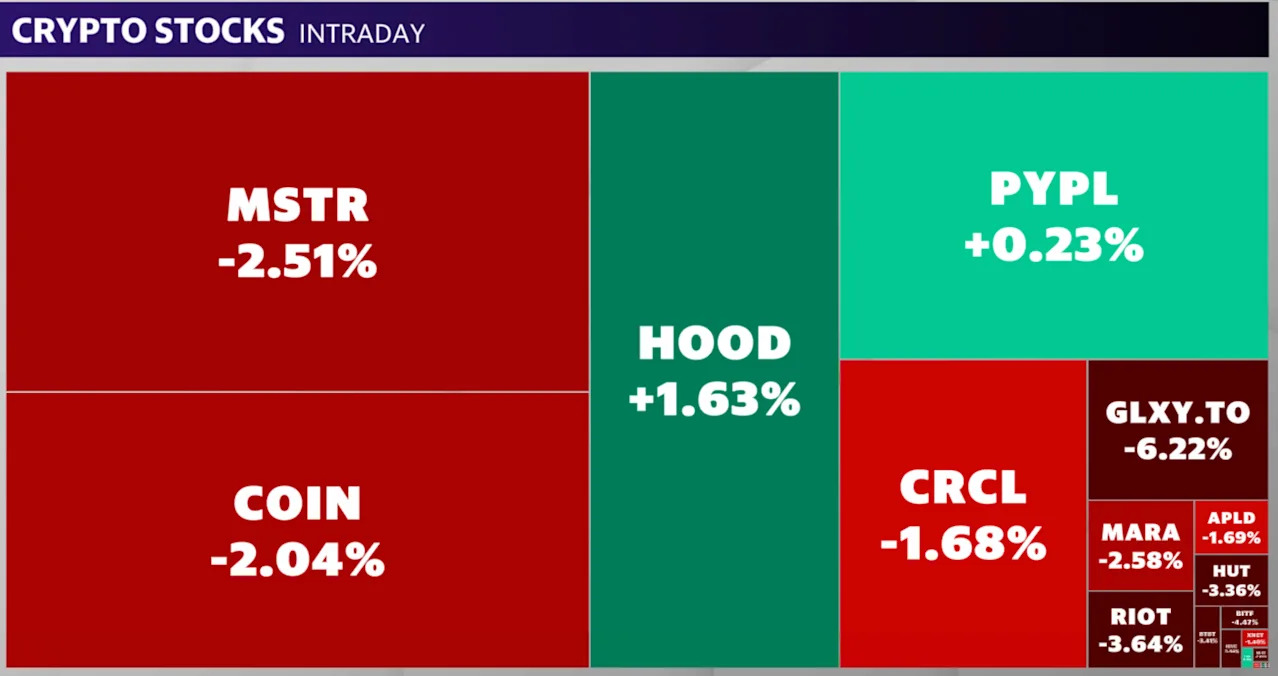
Stock market today: Dow, S&P 500, Nasdaq nudge higher in search for more records
Key Points
- US stocks stabilized near all-time highs on Friday, with the Dow Jones Industrial Average, S&P 500, and Nasdaq Composite each rising about 0.1%, following a week of significant earnings and trade developments.
- A US-Japan trade pact boosted market optimism, though concerns linger about profit-sharing in a proposed $550 billion US investment fund, while a potential US-EU deal is also in progress.
- President Trump's visit to the Federal Reserve, initially sparking speculation of conflict with Fed Chair Jerome Powell, concluded with Trump downplaying any intent to fire Powell, easing market concerns.
- Intel's stock dropped despite beating earnings expectations, as the company announced layoffs, canceled factory projects, and shifted focus to internal use of its new manufacturing process, raising doubts about its recovery.
- Investors are bracing for a busy upcoming week with the Fed's policy meeting, US jobs report, and major earnings from companies like Apple, Meta, and Microsoft, alongside an August 1 deadline for trade deals to avoid tariff hikes.
Summary
US stocks hovered near record highs on Friday, with the Dow Jones, S&P 500, and Nasdaq each gaining roughly 0.1%, as investors digested a week of major earnings and trade news. A US-Japan trade agreement lifted spirits, though tensions over a $550 billion investment fund's profit-sharing terms and a looming US-EU deal added uncertainty. President Trump's unexpected Federal Reserve visit, initially raising fears of a clash with Chair Jerome Powell, ended with reassurances against dismissal, calming markets. Intel's stock fell despite strong earnings, hurt by layoffs and a pivot to internal manufacturing focus, casting doubt on its recovery. Meanwhile, crypto stocks declined as the US dollar strengthened, and Phillips 66 saw gains from robust refining margins. Investors are now eyeing a critical week ahead, featuring the Fed’s policy meeting, a US jobs report, earnings from giants like Apple and Microsoft, and an August 1 deadline for trade deals to avert tariff hikes. While optimism persists, some on Wall Street question if the rally is driven by FOMO rather than fundamentals, prompting profit-taking ahead of these pivotal events.
yahoo
July 25, 2025
Stocks
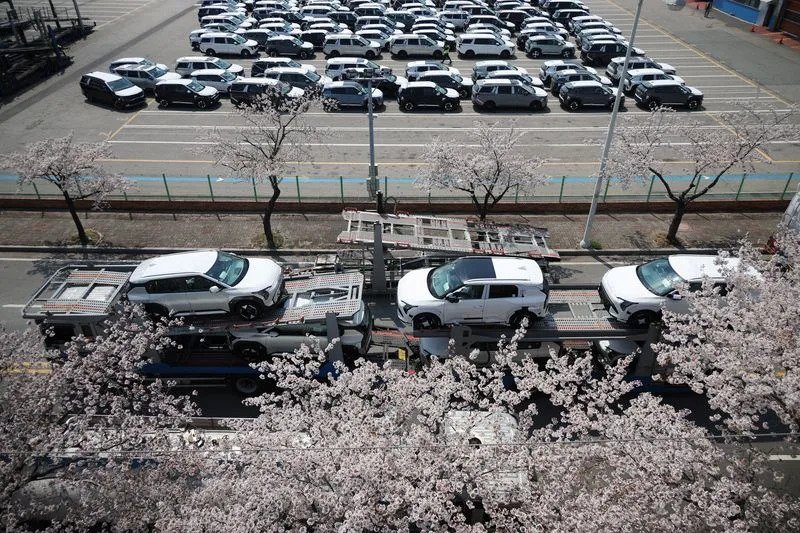
Kia Corp takes $570 million hit from US tariffs in second quarter
Key Points
- Kia Corp reported a significant financial impact of 786 billion won ($570 million) due to U.S. tariffs during the April to June period.
- The company's operating profit dropped by 24% to 2.76 trillion won in the second quarter compared to the previous year.
- Despite the profit decline, Kia saw a 5% increase in U.S. sales, driven by consumer fears of rising vehicle prices due to tariffs.
- Strong sales of the new Carnival hybrid SUV contributed to Kia's performance in the second quarter.
- Kia shares experienced a decline of 1.7% following the announcement.
Summary
Kia Corp, South Korea's prominent automaker and the world’s third-largest alongside Hyundai Motor, disclosed a substantial financial setback of 786 billion won ($570 million) due to U.S. tariffs in the second quarter of the year. This contributed to a 24% plunge in operating profit, which fell to 2.76 trillion won compared to the same period last year. Despite the profit downturn, Kia managed a 5% rise in U.S. sales, fueled by consumers purchasing vehicles ahead of anticipated price hikes resulting from the tariffs. The company also benefited from robust sales of its new Carnival hybrid SUV during the April to June timeframe. Meanwhile, South Korea is engaging in discussions to delay the imposition of these U.S. tariffs and seeks cooperation in mutual areas. Following the financial report, Kia’s shares dropped by 1.7%, reflecting investor concerns over the impact of tariffs on the company’s profitability.
yahoo
July 25, 2025
Stocks

US new home sales below expectations in June; housing supply rises
Key Points
- New U.S. single-family home sales rose by 0.6% in June to a seasonally adjusted annualized rate of 627,000 units, below the forecasted 650,000 units.
- Inventory of unsold new homes reached 511,000 units, the highest since October 2007, with a supply duration of 9.8 months at the current sales pace.
- Median new home price decreased by 2.9% year-over-year to $401,800, with builders increasingly cutting prices to attract buyers.
- Sales varied regionally, increasing in the South (5.1%) and Midwest (6.3%), but declining sharply in the Northeast (27.6%) and West (8.4%).
- Higher mortgage rates, averaging just under 7% for a 30-year fixed-rate, and economic policies continue to impact homebuilding and sales.
Summary
New U.S. single-family home sales in June grew by a modest 0.6% to an annualized rate of 627,000 units, falling short of economists' expectations of 650,000 units, as reported by the Commerce Department's Census Bureau. This slowdown, attributed to mortgage rates hovering just under 7% for a 30-year fixed-rate loan, has led to an inventory of unsold homes reaching 511,000 units—the highest since October 2007. With a supply duration of 9.8 months, the glut is pressuring prices, with the median new home price dropping 2.9% to $401,800 year-over-year. Builders are increasingly cutting prices to attract buyers, a trend noted in a recent National Association of Home Builders survey. Regionally, sales rose in the South and Midwest but plummeted in the Northeast and West. Meanwhile, the Federal Reserve, having cut rates three times in 2024, is expected to maintain its benchmark rate between 4.25%-4.50% at its upcoming meeting. Economic concerns, including potential inflation from protectionist trade policies, alongside declining homebuilding and permits, suggest residential investment will continue to drag on GDP growth in the second quarter.
yahoo
July 24, 2025
Stocks
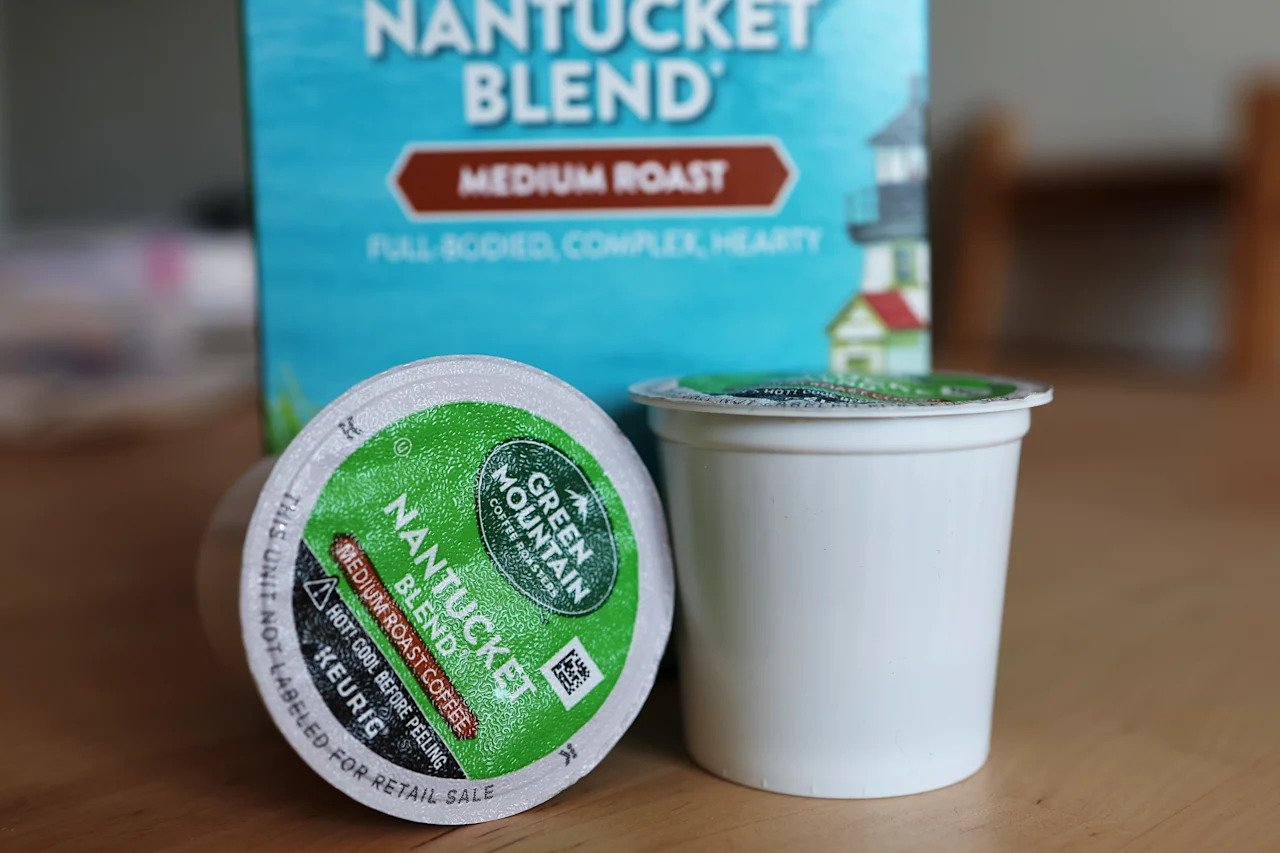
Trump tariffs live updates: Trump lifts tariff baseline rate, warns countries face 15-50% range
Key Points
- New Tariff Baseline: President Trump has announced a new baseline tariff rate for US trading partners ranging from 15% to 50%, with higher rates for countries deemed difficult to work with.**
- Trade Deals Progress: The US has finalized a trade deal with Japan at a 15% tariff rate and is nearing a similar agreement with the EU, potentially at 15% instead of the threatened 30%.**
- Other Agreements: Deals with the Philippines and Indonesia include tariffs of 19% on their goods entering the US, with specific conditions like no taxes on most US exports to these countries.**
- Retaliatory Measures: The EU has approved a retaliatory tariff package on over $100 billion of US goods if no deal is reached, matching Trump's threatened 30% rate.**
- Economic Impacts: Tariffs are already affecting industries, such as Brazil's citrus sector facing a potential 50% tariff and Keurig Dr. Pepper reporting sales drops due to tariff pressures.**
Summary
President Trump has introduced a new tariff baseline of 15% to 50% for US trading partners, with higher rates for less cooperative nations, as announced at an AI summit in Washington, DC. This shift from the previous 10% rate coincides with progress on trade deals, including a 15% tariff agreement with Japan, which also involves a $550 billion investment in the US. A similar deal with the EU is nearing completion, potentially at 15% instead of the threatened 30%, though the EU has prepared retaliatory tariffs on over $100 billion of US goods if negotiations fail. Additional agreements with the Philippines and Indonesia set tariffs at 19%, with favorable terms for US exports. Meanwhile, potential deals with India and Canada face higher proposed tariffs of 25% to 35%. The tariffs are already impacting industries, with Brazil's citrus sector reeling from a possible 50% rate and Keurig Dr. Pepper reporting a 22% drop in brewer sales due to tariff-related pressures and commodity inflation. These trade policies are creating global economic ripples, influencing prices, production, and business strategies even before full implementation.
yahoo
July 24, 2025
Stocks

Microsoft Hack Hits Hundreds of Firms, Agencies as Damage Spreads
Key Points
- Rapid Increase in Victims: The number of organizations compromised by a security vulnerability in Microsoft’s SharePoint servers has surged over six-fold in just a few days, with around 400 entities affected, up from an initial estimate of 60, according to Eye Security.**
- Geographic Spread: Most victims are in the US, followed by Mauritius, Jordan, South Africa, and the Netherlands, with high-profile breaches including the US National Nuclear Security Administration and the National Institutes of Health.**
- State-Sponsored Attacks: Microsoft attributes the attacks to Chinese state-sponsored hacking groups like Linen Typhoon and Violet Typhoon, amid ongoing US-China tensions over cybersecurity and trade.**
- Vulnerability Exploitation: The SharePoint flaws allow hackers to steal keys and impersonate users, potentially accessing sensitive data, though Microsoft has released patches to address the issue.**
- Broader Implications: Experts warn the true number of victims may be higher, with hackers possibly maintaining deep network access for espionage, targeting government, education, and technology sectors globally.**
Summary
A critical security vulnerability in Microsoft’s SharePoint servers has led to a sharp rise in cyberattacks, with over 400 organizations compromised, a six-fold increase in days, as reported by Eye Security. Predominantly affecting US entities, the breaches also span Mauritius, Jordan, South Africa, and the Netherlands, impacting key institutions like the US National Nuclear Security Administration and the National Institutes of Health. Microsoft has pointed to Chinese state-sponsored groups, including Linen Typhoon and Violet Typhoon, as culprits, escalating US-China cybersecurity tensions. The flaws enable hackers to steal access keys and infiltrate networks, though patches have been issued. Experts caution that the actual victim count may be underreported, with potential for deeper espionage across government, education, and tech sectors worldwide. While no data breaches are confirmed, the US and affected nations are collaborating with Microsoft to mitigate risks. This incident underscores ongoing global cybersecurity challenges and the sophisticated nature of state-backed hacking campaigns.
yahoo
July 24, 2025
Stocks

Trump Says Countries Will Face Tariffs Ranging From 15% to 50%
Key Points
- Tariff Floor Rising: President Trump has indicated that the minimum tariff rate for reciprocal tariffs will be at least 15%, with rates potentially ranging between 15% and 50%, marking an increase from earlier mentions of a 10% baseline.**
- Global Trade Impact: Trump plans to impose tariffs on nearly all US trading partners, with over 150 countries receiving tariff letters, though some smaller nations in Latin America, the Caribbean, and Africa may face a 10% baseline.**
- Negotiations and Deals: While Trump has expressed reluctance for extensive negotiations, he has reduced Japan's tariff from 25% to 15% in exchange for market access and investment commitments, with similar discussions ongoing with South Korea and the Philippines.**
- EU and Other Nations: The European Union and countries like India are seeking agreements to lower tariffs before the August 1 deadline, with Trump open to reduced rates if the EU allows greater access for American businesses.**
- Economic Concerns: Vietnam anticipates a significant drop in exports to the US—potentially by a third—if higher tariffs are implemented, highlighting the broader economic implications for affected nations.**
Summary
President Donald Trump has signaled a tougher stance on trade by setting a minimum tariff rate of 15%, up from a previously mentioned 10%, with potential rates reaching 50% for some countries, as part of his reciprocal tariff policy ahead of an August 1 deadline. Speaking at an AI summit in Washington, Trump outlined plans to impose duties on nearly all US trading partners, with over 150 countries receiving tariff notifications. While smaller nations in Latin America, the Caribbean, and Africa may face a 10% baseline, larger economies are under pressure to negotiate. Japan recently secured a reduction from 25% to 15% by easing restrictions on US products and supporting a $550 billion investment fund, with South Korea and the Philippines pursuing similar deals. The European Union and India are also pushing for agreements to mitigate tariff impacts. Trump has downplayed extensive negotiations, framing tariff letters as "deals," though he remains open to lowering rates for countries that expand market access for American businesses. Meanwhile, Vietnam fears a drastic reduction in US exports—potentially by a third—if higher tariffs take effect, underscoring the global economic stakes. These policies reflect Trump's aggressive approach to reshaping trade relationships, with significant implications for international commerce.
yahoo
July 24, 2025
Stocks
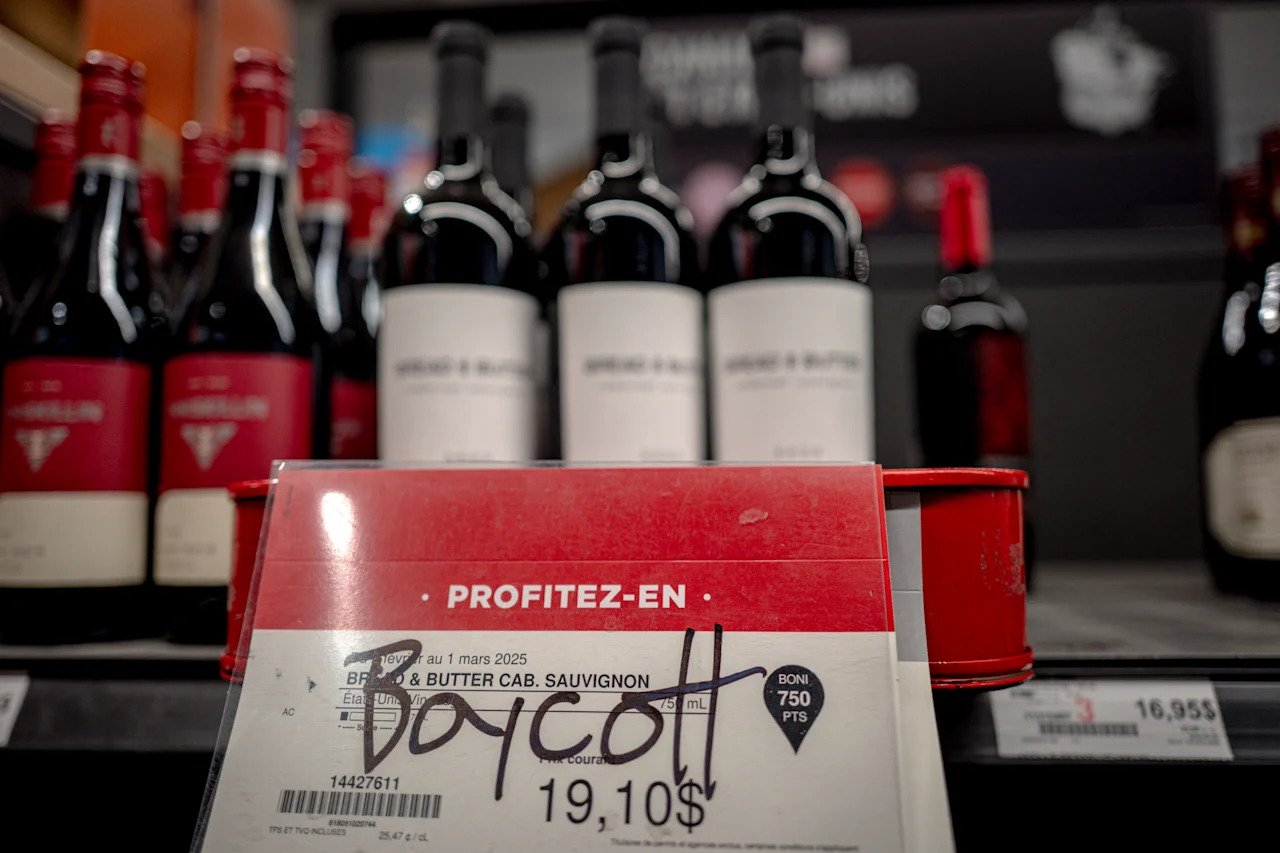
Trump tariffs live updates: Trump strikes deal with Japan, but EU digs in with over $100B counterattack
Key Points
- EU Tariff Threat: The European Union plans to impose 30% tariffs on over $100 billion of US goods, including Boeing planes and whiskey, if no trade deal is reached by August 1.**
- US Trade Deals: President Trump announced new trade agreements with Japan, the Philippines, and Indonesia, featuring reduced or zero tariffs on US exports and investments like Japan's $550 billion commitment.**
- Trump's Tariff Strategy: Trump emphasized trading tariff reductions for open markets, aiming for zero tariffs on US goods in major countries, as stated on Truth Social.**
- Automaker Concerns: Detroit automakers, including GM, Ford, and Stellantis, expressed concerns over the US-Japan deal, citing unfair tariff disparities compared to North American imports.**
- Market Reactions: European auto shares rallied after the US-Japan deal, with hopes for similar EU agreements, while companies like SAP faced declines due to trade war uncertainties.**
Summary
The European Union has threatened to impose 30% tariffs on over $100 billion of US goods, including Boeing aircraft and whiskey, if no trade deal is reached by August 1, in response to potential US tariffs of the same rate. Meanwhile, President Trump announced new trade agreements with Japan, the Philippines, and Indonesia, featuring significant investments and reduced tariffs on US exports, with Japan committing $550 billion. Trump also advocated for zero tariffs on US goods in exchange for market access, as tensions rise with larger trade partners like the EU, India, and Canada, where he has threatened tariffs of 25% to 35%. Detroit automakers criticized the US-Japan deal for favoring Japanese imports over North American ones, while European auto stocks rallied on hopes of similar deals. However, trade uncertainties negatively impacted companies like SAP, despite strong cloud revenue growth. The global trade landscape remains volatile as Trump plans to set blanket tariff rates for over 150 smaller trade partners and as ships rush to US ports to avoid impending tariffs on goods like copper.
yahoo
July 23, 2025
Stocks

Krispy Kreme, GoPro both soar as the next darlings of this summer's meme stock resurgence
Key Points
- GoPro (GPRO) and Krispy Kreme (DNUT) are the latest companies to experience significant gains in a meme stock resurgence, with GPRO up as much as 90% and DNUT up 70% in premarket trading on Wednesday, though gains later moderated to 40% and 26%, respectively.
- Both companies have seen recent revenue declines, with GoPro's Q1 2025 revenue down 13% to $134.3 million and Krispy Kreme's Q1 2025 revenue down 15% to $375.2 million compared to the previous year.
- This meme stock rally follows similar surges for Opendoor (OPEN) and Kohl's (KSS), which saw shares more than double earlier in the week, though both were down over 10% on Wednesday.
- Unlike other meme stocks with high short floats (Krispy Kreme at 28%, Opendoor at 21%, Kohl's at 49%), GoPro has a lower short float of less than 10%.
- Retail investors are driving this frenzy, reminiscent of the 2020-2021 GameStop (GME) rally, with GoPro and Krispy Kreme set to report earnings in August.
Summary
GoPro (GPRO) and Krispy Kreme (DNUT) have emerged as the latest focal points in a meme stock resurgence dominating markets this summer. On Wednesday, GoPro's stock surged up to 90% in premarket trading before settling at a 40% gain, while Krispy Kreme rose as much as 70% before moderating to a 26% increase. This follows significant rallies for Opendoor (OPEN) and Kohl's (KSS) earlier in the week, though both saw declines exceeding 10% on Wednesday. Despite the hype, both GoPro and Krispy Kreme reported revenue drops in Q1 2025, with GoPro down 13% to $134.3 million and Krispy Kreme down 15% to $375.2 million. GoPro, once a high-flying stock post its 2014 IPO, has lost nearly 98% of its value, while Krispy Kreme's stock remains above $5 after a pandemic peak. Unlike other meme stocks with high short floats, GoPro's is under 10%, compared to Krispy Kreme's 28%, Opendoor's 21%, and Kohl's 49%. This retail investor-driven frenzy echoes the 2020-2021 GameStop rally, with both companies set to report earnings in August.
yahoo
July 23, 2025
Stocks
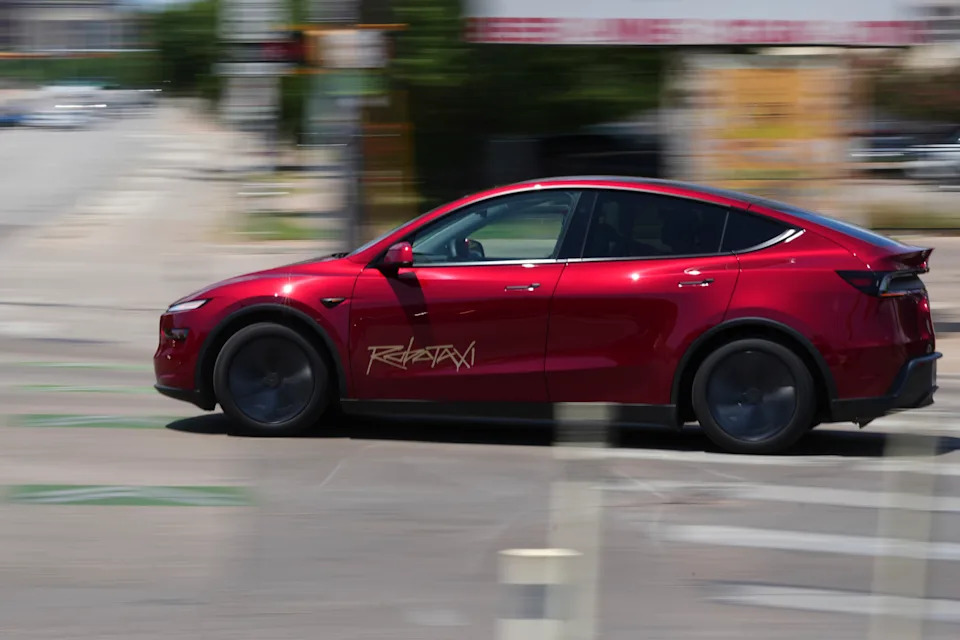
Tesla Q2 earnings preview: 3 things to watch
Key Points
- Tesla's core auto business, which drives the majority of its revenue and profit, is struggling with a projected Q2 revenue drop of 9% to $22.79 billion and a 13.5% decline in global vehicle deliveries year over year.
- Elon Musk's focus on robotaxis offers potential for future growth, with expanded testing in Austin, Texas, though Tesla lags behind competitors like Alphabet's Waymo and Uber in deployment.
- Investors are awaiting updates on a promised cheaper EV, with delays likely pushing the launch to Q4 2025, potentially disappointing Tesla bulls.
- Musk's political activities and a rocky relationship with President Trump, alongside tariffs and regional sales weaknesses, are dampening optimism for Tesla's stock, which is down 18% year to date.
- Analysts suggest weaker fundamentals and the need for capital to fund autonomous vehicle and AI initiatives could lead to a future share sale, a move unpopular with investors.
Summary
Tesla (TSLA) faces significant challenges as it approaches its Q2 2025 earnings report, with stock down 18% year to date amid a rocky relationship between CEO Elon Musk and President Trump, impacting late-2024 optimism. The core auto business, Tesla’s primary revenue source, is under pressure with expected Q2 revenue of $22.79 billion, a 9% drop, and a 13.5% decline in global deliveries. Regional weaknesses, competition, and consumer shifts to hybrids add to concerns. Meanwhile, Musk’s focus on robotaxis offers hope, with testing expanding in Austin, though Tesla trails competitors like Waymo and Uber. Investors are eager for updates on a cheaper EV, promised at around $30,000, but delays to Q4 2025 seem likely, potentially disappointing stakeholders. Additionally, tariffs on foreign cars, Musk’s political reputational hit, and the possibility of a future share sale to fund autonomous vehicle and AI initiatives further cloud Tesla’s outlook. As the S&P 500 and Nasdaq hit new highs, Tesla’s earnings call will be critical for insights into its struggling auto segment, robotaxi plans, and new vehicle timelines.
yahoo
July 23, 2025
Stocks
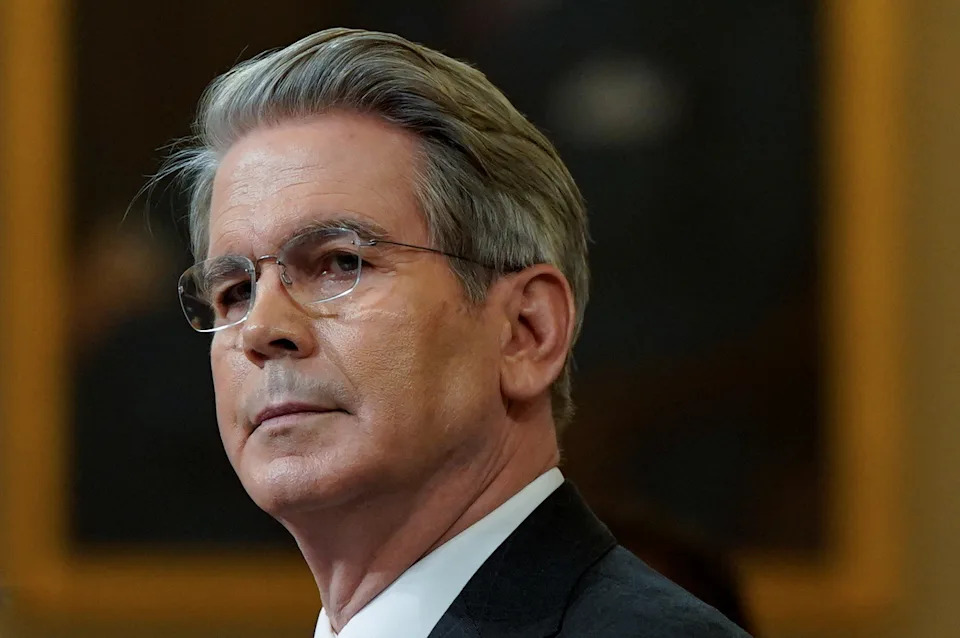
Bessent calls for internal review of Fed but doesn't think Powell needs to step down
Key Points
- Treasury Secretary Scott Bessent opposes immediate resignation of Fed Chair Jerome Powell, suggesting Powell can serve until his term ends in May or leave early if he chooses.
- Bessent criticizes the Federal Reserve's $2.5 billion headquarters renovation and calls for a review of its non-monetary policy operations, citing mission creep.
- He advocates for deeper reforms in bank regulations, particularly scrapping outdated capital requirements and a flawed dual capital structure proposed previously.
- Bessent supports the Fed’s independence in monetary policy but aligns with White House efforts to exert greater control over the Fed’s non-monetary operations, including bank supervision.
- As a potential candidate to replace Powell, Bessent is pushing for a broad reexamination of financial regulations to ease lending and boost the US economy.
Summary
Treasury Secretary Scott Bessent has taken a critical stance on the Federal Reserve, targeting its non-monetary operations and regulatory framework while stopping short of demanding Fed Chair Jerome Powell’s immediate resignation. Despite President Trump’s calls for Powell to step down, Bessent stated on Fox Business that Powell could serve until his term ends in May. However, Bessent intensified pressure on the Fed by questioning its $2.5 billion headquarters renovation and urging a review of its broader operations, arguing they jeopardize its monetary policy independence. At a Fed conference, he pushed for significant reforms in bank regulations, criticizing outdated capital requirements and a proposed dual capital structure. Bessent, a potential successor to Powell, supports the Fed’s autonomy in monetary policy but aligns with White House efforts to control other Fed functions, like bank supervision. Additionally, he aims to overhaul financial regulations to facilitate lending and stimulate economic growth, with the Treasury playing a central role in driving consensus and action. Recent proposals to rollback bank capital rules, such as the enhanced supplementary leverage ratio, signal further regulatory changes ahead, though their impact on banks may be limited. Bessent’s actions reflect a broader push for innovation and financial stability under the current administration.
yahoo
July 22, 2025
Stocks
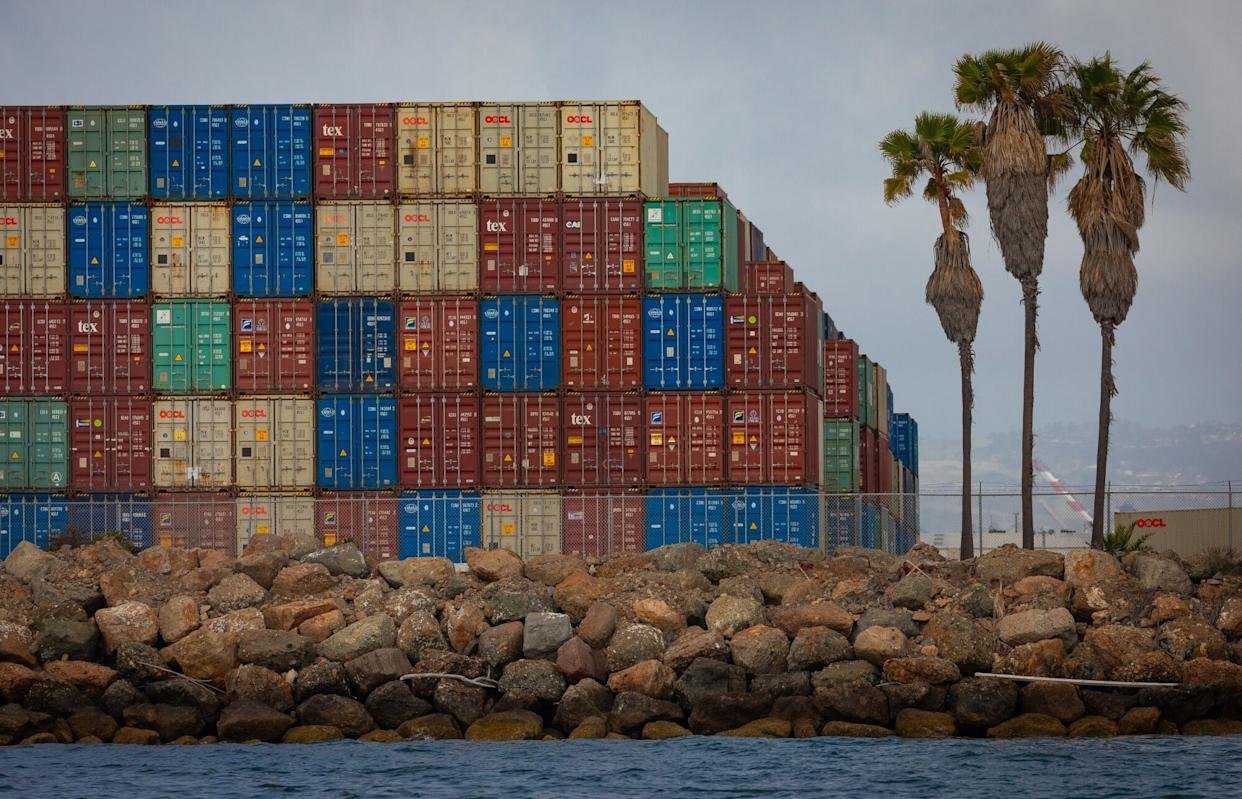
Trump Tax Law to Add $3.4 Trillion to US Deficits, CBO Says
Key Points
- Deficit Impact: President Trump's new tax and spending law will increase US deficits by $3.4 trillion over the next decade, as per the Congressional Budget Office (CBO) estimate. **
- Revenue and Spending Changes: The law results in a $4.5 trillion revenue decrease and a $1.1 trillion spending reduction through 2034, compared to the current-law baseline. **
- Health Care Coverage Loss: Approximately 10 million Americans are projected to lose health insurance by 2034 due to provisions like new Medicaid work requirements and funding limitations. **
- Economic Concerns: Economists and investors warn that the growing budget shortfall could raise borrowing costs and inflation, compounded by rising prices from tariffs. **
- Alternative Scoring: Using a current policy baseline, the law reduces deficits by $366 billion over a decade, a figure achieved through accounting maneuvers by lawmakers. **
Summary
President Donald Trump’s recently enacted tax and spending law, dubbed the “One Big Beautiful Bill,” is projected to add $3.4 trillion to US deficits over the next decade, according to the Congressional Budget Office (CBO). Signed on July 4, the legislation extends Trump’s 2017 income-tax cuts, offers business breaks, lifts state and local tax deduction caps, and temporarily eliminates taxes on tips and overtime. However, it also slashes spending by $1.1 trillion while cutting revenues by $4.5 trillion through 2034. The law includes Medicaid cuts and new work requirements, leading to an estimated 10 million Americans losing health insurance by 2034. Economists warn that the expanding budget shortfall, already significant, could increase borrowing costs and inflation, exacerbated by tariff-driven price rises impacting low-income families. The Trump administration claims tariff revenues will offset deficits, though concerns persist. An alternative scoring requested by Senate Republicans shows a $366 billion deficit reduction over a decade, achieved through accounting tactics that minimize the perceived cost of tax cut extensions. This law, reflecting much of Trump’s economic agenda, has sparked debate over its long-term fiscal and social consequences.
yahoo
July 22, 2025
Stocks
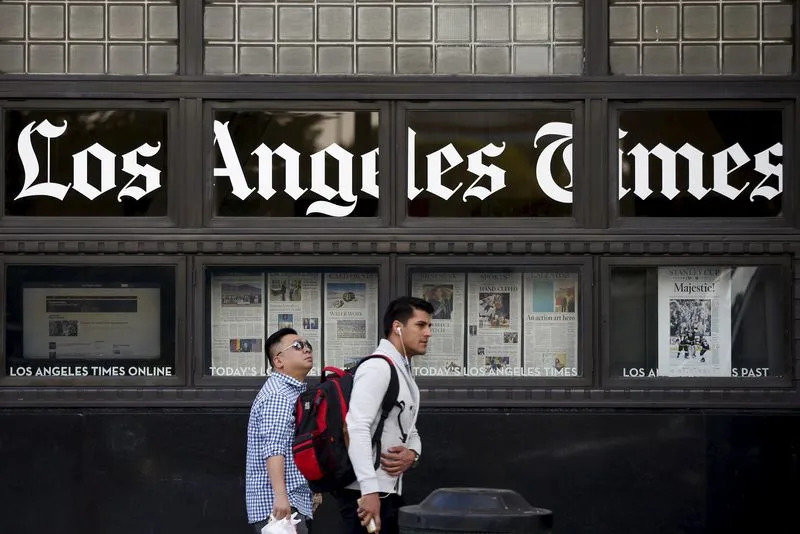
Los Angeles Times to go public, owner Soon-Shiong says
Key Points
- Los Angeles Times to Go Public: Owner Patrick Soon-Shiong announced plans to take the 143-year-old newspaper public within the next year, aiming to democratize ownership.**
- Public Ownership Model: The structure will be similar to the NFL's Green Bay Packers, allowing the public to own shares of the publication, with a partner organization assisting in the setup.**
- Recent Turmoil: The newspaper has faced significant challenges, including layoffs of over 20% of its newsroom staff in January and leadership exits amid annual losses of $30-40 million.**
- Editorial Controversy: The editorial editor resigned last year after Soon-Shiong reportedly blocked an endorsement of Kamala Harris, leading to subscriber backlash.**
Summary
The Los Angeles Times, a 143-year-old publication, is set to go public within the next year, as announced by its billionaire owner, Patrick Soon-Shiong, during an interview on "The Daily Show" with Jon Stewart. Soon-Shiong aims to democratize ownership of the newspaper by adopting a model similar to the public ownership structure of the NFL's Green Bay Packers, with a partner organization working on the framework. This decision comes after a tumultuous period for the LA Times, marked by significant financial losses of $30-40 million annually and substantial layoffs in January, where over 20% of the newsroom staff were cut. Leadership changes have also rocked the paper, with key exits including Executive Editor Kevin Merida and Managing Editor Sara Yasin. Additionally, controversy arose when the editorial editor resigned after Soon-Shiong reportedly blocked an endorsement of then-Vice President Kamala Harris, sparking subscriber backlash. Soon-Shiong, who acquired the LA Times in 2018 for $500 million from Tronc, is steering the newspaper toward a new era of public involvement amidst ongoing challenges. The LA Times did not immediately respond to Reuters for further details on the public offering plans.
yahoo
July 22, 2025
Stocks
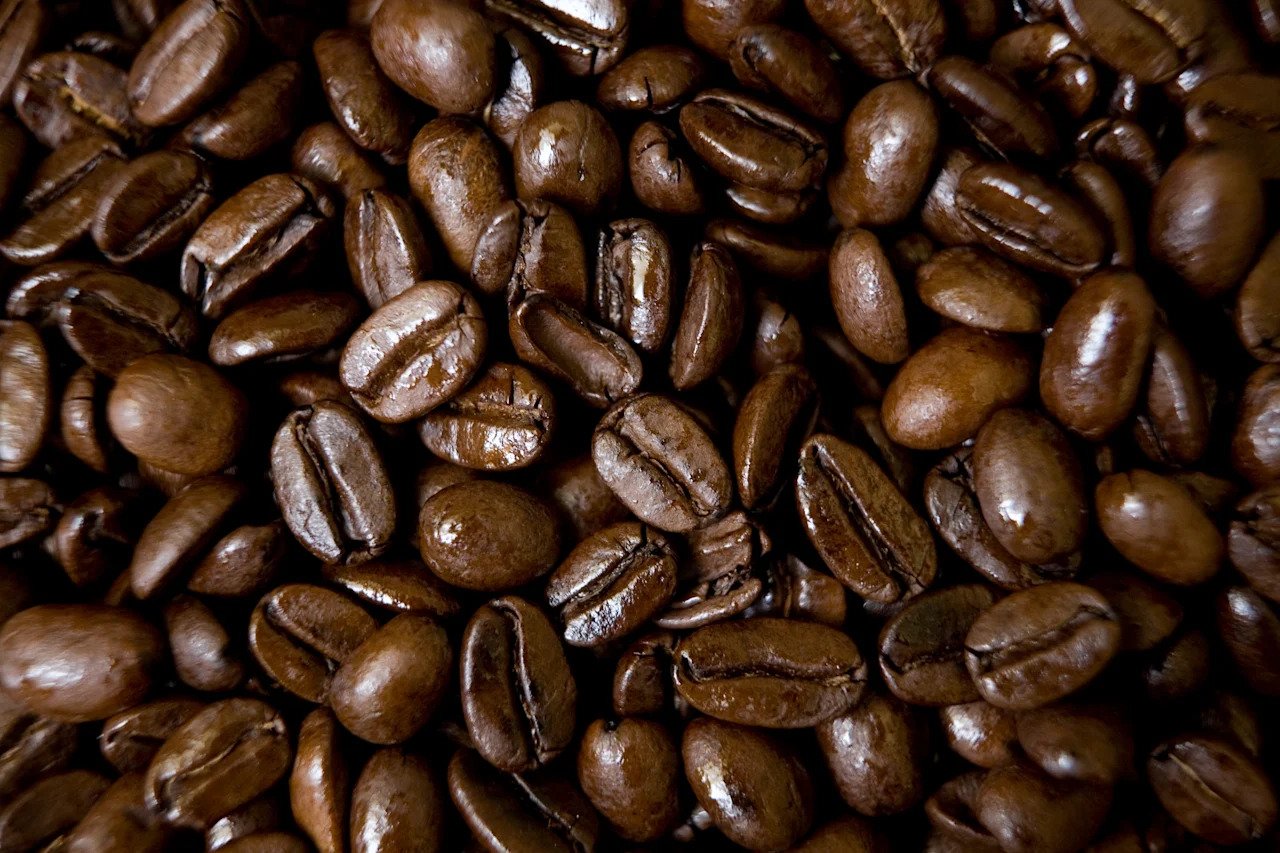
Trump tariffs live updates: EU readies its reprisals as Trump pushes for higher tariffs
Key Points
- EU Retaliation Plans: The European Union is preparing stringent measures to counter potential US tariffs, with officials meeting to strategize reprisals and considering tools like the anticoercion instrument to restrict US trade and investment.**
- Trump's Tariff Threats: President Trump is pushing for higher tariffs on EU goods, proposing a minimum of 15-20% and threatening 30% duties by August 1, alongside tariffs on other trading partners like Brazil (50%), Canada (35%), and Mexico (30%).**
- Negotiation Challenges: Despite ongoing talks, Trump's demand for higher baseline tariffs has strained EU-US negotiations, with Germany aligning with France for a tougher stance, while time runs out before the August 1 deadline.**
- Impact on Industries: US companies like Cleveland-Cliffs praise tariffs for supporting domestic industries, while retailers face uncertainty over import costs and availability of goods ahead of the holiday season.**
- Global Trade Dynamics: Treasury Secretary Scott Bessent emphasizes quality over speed in trade deals, hinting at possible deadline extensions, while countries like Brazil prepare contingency plans for potential tariff impacts.**
Summary
The European Union is gearing up for a potential trade war with the US as President Trump pushes for higher tariffs, threatening a no-deal outcome by the August 1 deadline. The EU is drafting retaliatory measures, including restrictions on US digital services and public procurement access, while member states like Germany signal readiness for conflict if negotiations fail. Trump’s proposed tariffs range from 15-20% on EU goods to 50% on Brazilian imports, disrupting months of talks and affecting global trade partners like Canada and Mexico. US industries, such as steelmaker Cleveland-Cliffs, welcome the protectionist policies, but retailers struggle with uncertainty over import costs for holiday goods. Treasury Secretary Scott Bessent prioritizes high-quality deals over rushed agreements, leaving room for deadline flexibility, while countries like Brazil brace for economic redirection if tariffs hit. The escalating tensions highlight the delicate balance of trade negotiations and the broader economic implications worldwide.
yahoo
July 21, 2025
Stocks
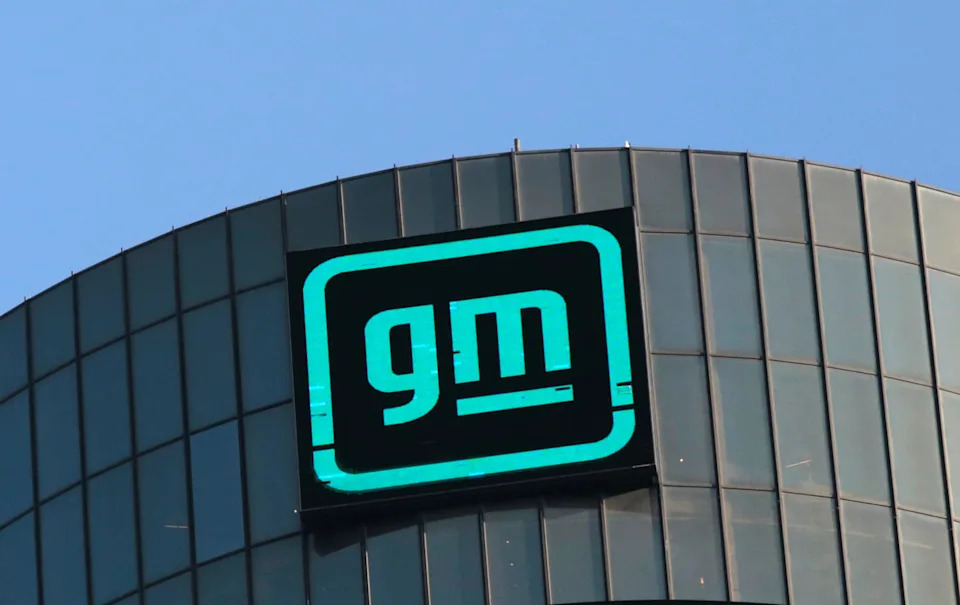
Everyone wants to be a bank now. Banks aren’t happy about it.
Key Points
- Automakers and Crypto Firms Applying for Banking Charters: Companies like General Motors, Stellantis, Nissan, Circle, and Ripple are seeking US banking charters, including industrial loan company (ILC) charters and national trust banking charters, to offer banking services with potentially lighter regulatory oversight.**
- Banking Industry Opposition: Traditional banks and lobbying groups like the Bank Policy Institute and ICBA oppose these charters, citing regulatory double standards, risks, and historical failures like GMAC’s 2008 collapse, arguing they threaten consumer safety and market stability.**
- Regulatory Shifts Under Trump Administration: The Trump administration is reexamining financial regulations, potentially loosening rules for banks and lowering entry barriers for non-traditional entrants, while the FDIC is adjusting policies for ILC approvals.**
- Crypto and Fintech Growth: Crypto firms like Circle and Ripple are applying for national trust charters to gain credibility and comply with new legislation like the GENIUS Act, while even big banks like JPMorgan are exploring stablecoin-related innovations.**
Summary
A growing number of non-banking companies, including automakers like General Motors and Stellantis, and cryptocurrency firms like Circle and Ripple, are applying for US banking charters, sparking tension with traditional banks. These new entrants seek charters such as industrial loan company (ILC) status or national trust banking charters, which could allow them to offer banking services with less stringent regulations. Banks and lobbying groups like the Bank Policy Institute and ICBA oppose this, arguing it creates a regulatory double standard and poses risks, citing past failures like GMAC’s 2008 collapse. Meanwhile, the Trump administration is reviewing financial regulations, potentially easing rules for banks and new entrants alike, while the FDIC is adjusting its approach to ILC approvals. Crypto and fintech firms are also pursuing charters to gain credibility and comply with new laws like the GENIUS Act, as even major banks like JPMorgan explore stablecoin innovations. This clash over banking access highlights broader concerns about competition, consumer safety, and the evolving financial landscape.
yahoo
July 20, 2025
Stocks

Tesla, Alphabet highlight earnings rush as market hovers near record highs: What to know this week
Key Points
- Market Performance: The S&P 500 and Nasdaq Composite are near record highs, with the Nasdaq up over 1.6% and the S&P 500 up 0.7% last week, despite tariff concerns and monetary policy debates.**
- Earnings Season: 112 S&P 500 companies, including Alphabet, Tesla, and Chipotle, are set to report quarterly results, with Big Tech expected to drive significant earnings growth.**
- Federal Reserve Policy: Fed governor Christopher Waller advocates for a July rate cut, though market expectations for a cut have dropped to a 5% probability, influenced by sticky inflation and strong economic data.**
- Economic Data: A quiet week for economic releases, with focus on services and manufacturing sector updates as the Federal Reserve enters a blackout period before its July meeting.**
Summary
The S&P 500 and Nasdaq Composite are close to record highs, showing resilience amid escalating tariffs and monetary policy debates, with the Nasdaq gaining over 1.6% and the S&P 500 up 0.7% last week. A significant earnings season is underway, with 112 S&P 500 companies, including Alphabet, Tesla, and Chipotle, set to report, and Big Tech expected to lead with a 14.1% earnings growth compared to the rest of the index at 3.4%. Federal Reserve governor Christopher Waller has called for an interest rate cut in July, citing inflation near target, though market expectations for a cut have diminished to just 5% due to persistent inflation and robust economic indicators like retail sales. Meanwhile, a quiet week of economic data will focus on manufacturing and services sectors as the Fed enters a blackout period before its July 29-30 meeting. Despite strong earnings from companies like Netflix and big banks, stock reactions have been muted due to high valuations and elevated expectations, raising concerns among strategists about potential pullbacks if results disappoint. The market anticipates a broadening of earnings growth beyond Big Tech in coming quarters, which could support a more sustained rally if cyclical sectors show improvement.
yahoo
July 20, 2025
Stocks